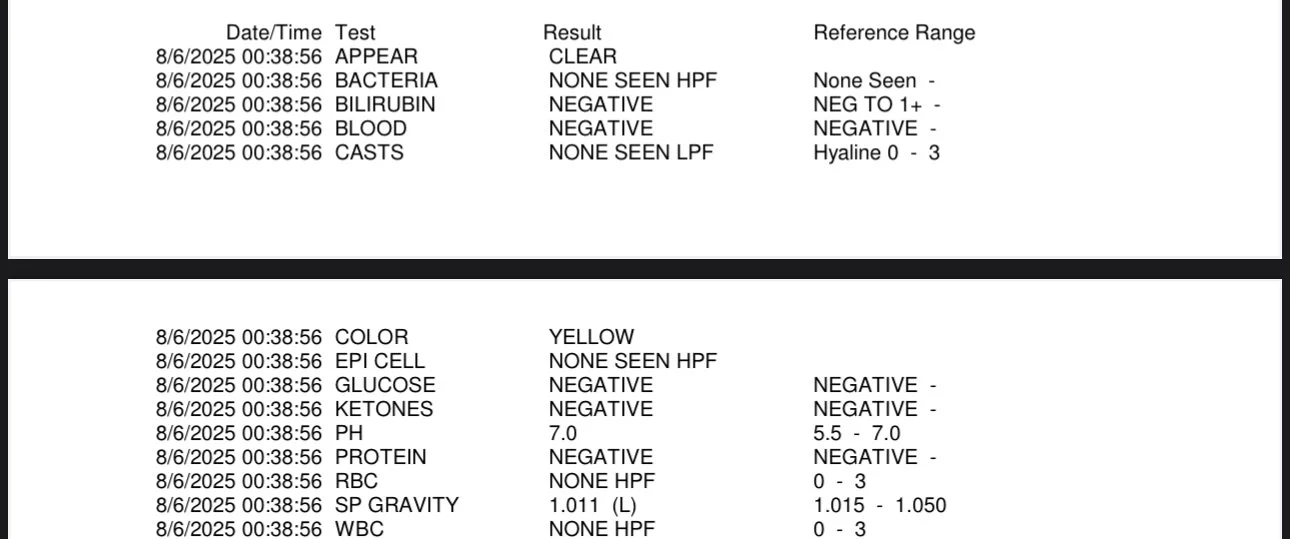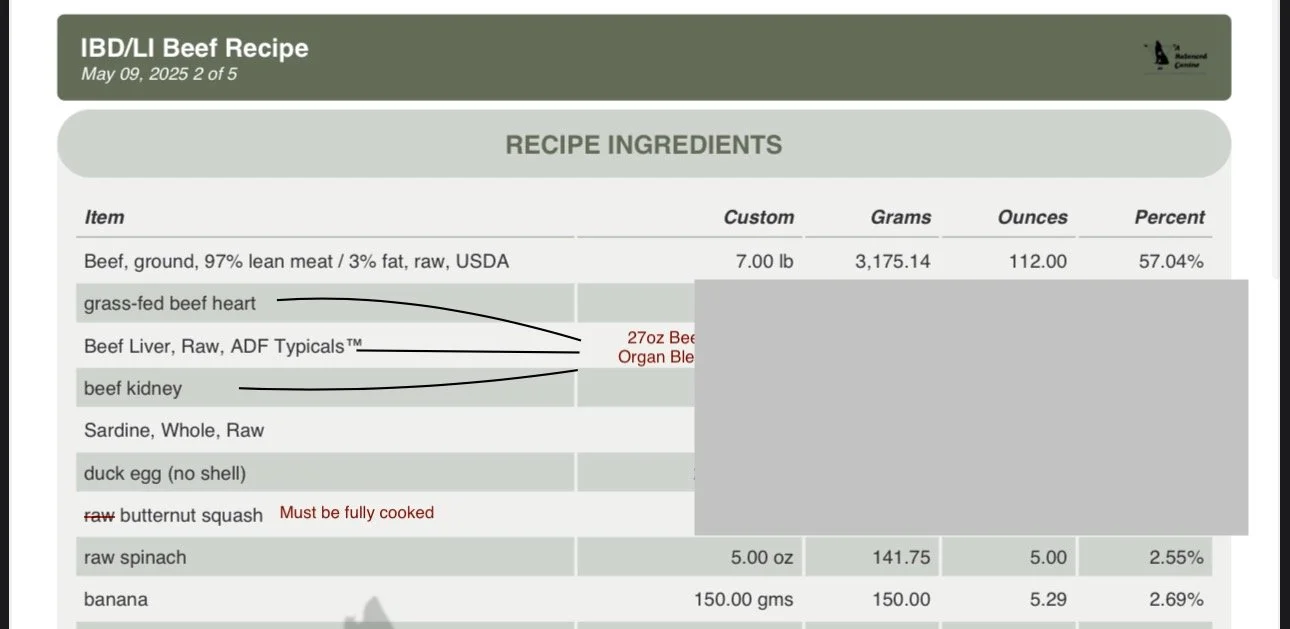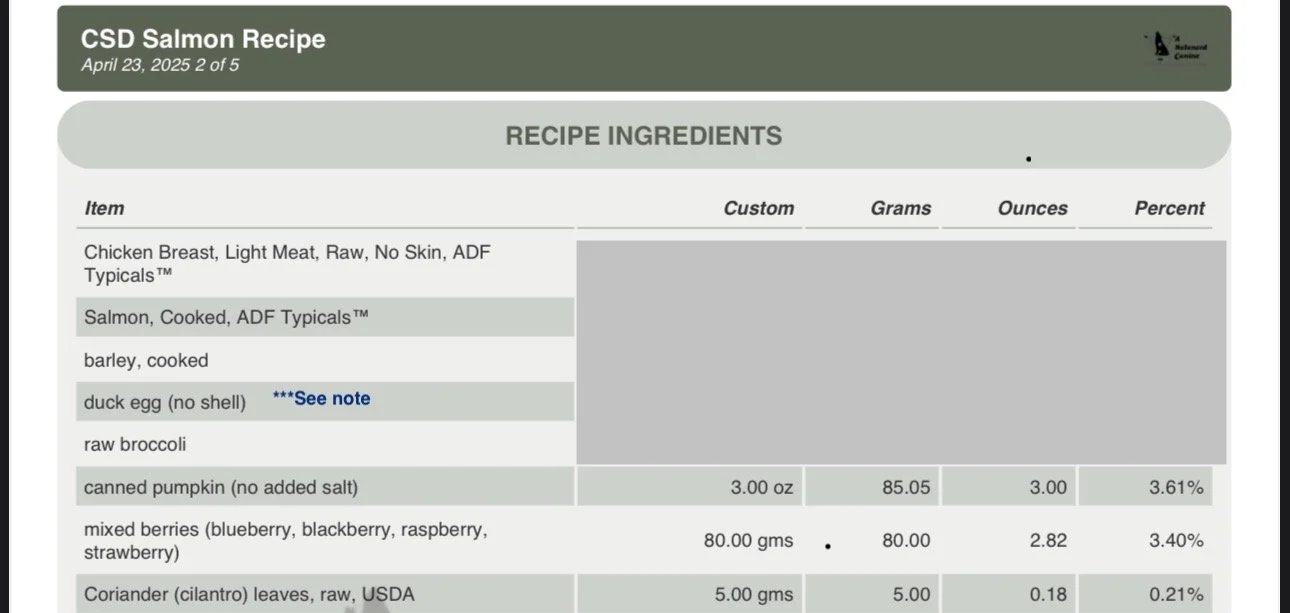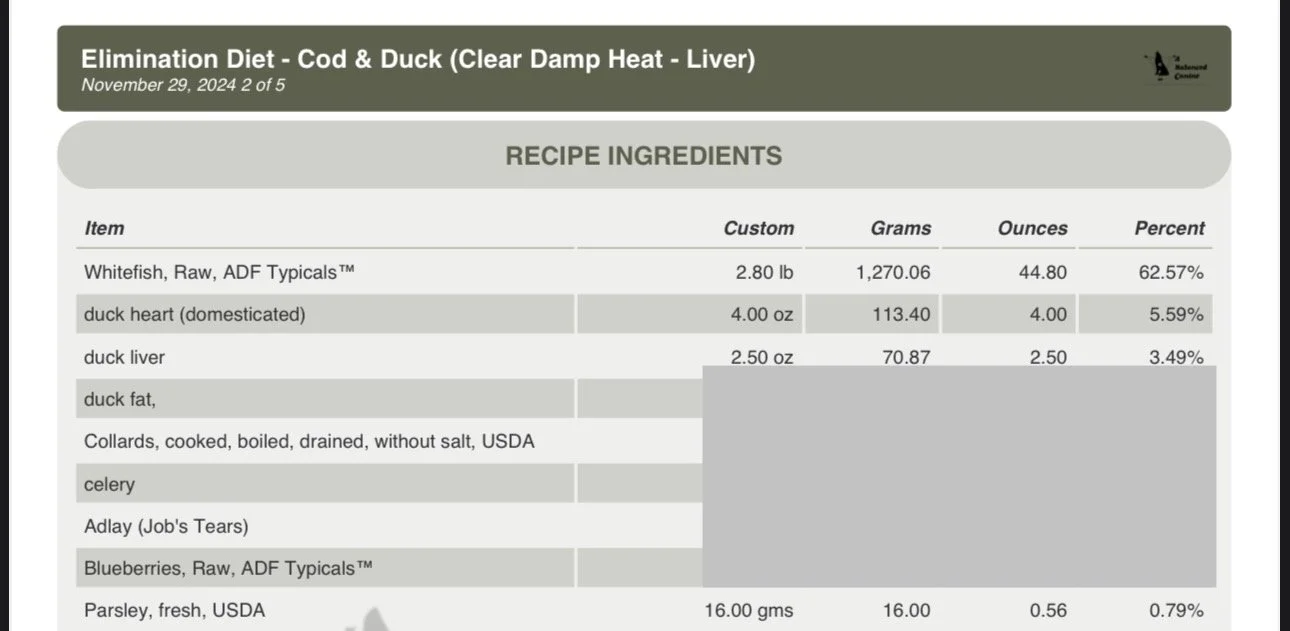Food Therapy Principles & Diet Customization
Every food has a unique impact on the body. Understanding how foods operate within the body and using those to create a custom diet can help address persistent symptoms, support organ systems that may need extra attention, and restore balance in the body.
Lab work and Diet Examples provided below…
Each and every food that enters the body operates differently. Food is absorbed in different areas and contains a unique macro and micronutrient makeup that affect which organs it supports, and what influence it will have on the operations in the body. For thousands of years these principals have been used in different Food Therapy modalities successfully. Although they all vary slightly in their reasoning, terminology and approach… the key principals of these food therapies remain quite similar as they all view food as medicine, a tool to aid the body in daily function and assist it when certain systems are failing. In Traditional Chinese Medicine food therapy focuses on the energetic properties of food and it’s different affects on the body, allowing a diet to be created to restore balance by paying attention to each unique individuals personality and external factors such as seasonality. Similarly in Ayurvedic Medicine, food is categorized by different properties and their significant impact on the doshas (energy) within living beings allowing a specific diet to be tailored to each person/pets constitution.
Looking at nutrition as a sliding scale, a unique and customizable source of energy can help us build diets that work fluidly for each pet. Nutrition is incredibly specific to each and every pet, and when we look at conventional commercial diets for pets, each diet, even prescription diets are treated within a singular set of parameters. These parameters are based on research, feeding trials and the averages, but it fails to recognize health as a sliding scale. This is often why people find that these processed prescription foods do little to manage their dogs condition and rarely improve upon it. When a pet has a clear diagnosis, this provides general macro and micronutrient guidelines to help support the affected systems, but it does not account for the unique set of characteristics of that individual, such as; itchy inflamed skin, discharge or mucous build-up in various areas of the body, clammy skin, dry flakey skin, heat deficiency, circulation issues, etc. All of these are imbalances in the body, which can be addressed through food therapy, using the diet to manipulate the body to achieve desired outcomes and restore overall balance. By formulating foods with high-quality, minimally processed ingredients we can not only provide balanced and complete nutrition, we can also design diets that meet those clinical parameters for each condition, while simultaneously taking into account holistic food therapy principals that can not only help them survive, but thrive.
For Example…
Beef is Warming, it generates heat in the body by tonifying the blood. For pets that have issues with circulation or are heat deficient, this can be beneficial. For pets that are cool-seeking, are itchy and inflamed, this increased circulation and heat can exacerbate symptoms. Reactions such as these are not always related to a food intolerance, sometimes it is just related to your pet’s current imbalance and the affect that food encourages not being conducive to what your pet needs at the time.
Pork is dampening, it generates moisture in the body. For pets that are chronically dehydrated or older pets that have been kibble fed and have dry flakey skin, a crusty nose, pork can be extremely helpful at creating moisture in the body. However, for dogs with loose stool or too much dampness in the GI tract pork can exacerbate those symptoms.
The idea is to create balance in the body through it’s primary source of energy, food. This is just ONE of the reasons why diet diversity is so important. Feeding any one thing for too long can tip the scales and cause imbalances in the body. Pork when fed for too long can contribute to too much dampness in the body, creating an ideal environment for yeast growth. This is not exclusive to proteins, each and every food has different properties that aid different systems and encourage various responses.
Dandelion Greens tonify the bladder and help to drain dampness. Coix Seed drains dampness and encourages detoxification of the body through bladder emptying. Dairy increases dampness in the body. Cucumber helps clear heat. Nettle helps clear damp heat in the bladder and is softening which can help with the dissolution or passing of hard sediment in the body.’
Your pet’s diet can either be working for them, or against them. In my practice, I am a huge advocate for the power of fresh feeding when done responsibly (complete & balanced nutrition, with appropriate macronutrient proportions for each species). However, your pet’s fresh food diet can actually be contributing to their symptoms as well, which is why it is important to understand the ingredients being used, and what you hope to be achieved with that custom selection. One of the most fascinating components of diet formulation for me has always been the endless possibilities and combinations, each ingredient has a purpose and creates a domino affect in the body. For pet’s with a multitude of conflicting health conditions, this can truly be one of the best options for them because of it’s adaptability. Working almost exclusively with dogs and cats with serious health conditions like; CSD, CKD, Chronic Pancreatitis, IBD, Heart Disease, Cancer, HUA, +more, requires us to be very fluid in our approach. When some of these conditions are combined together like HUA & IBD or HUA & Hypercholesterolemia (see example below) which are very conflicting in their general parameters it becomes like a puzzle, but a solvable one when using fresh foods.
Gently Cooked Diet Example for a Dalmatian with Hyperuricosuria, numerous food sensitivities and Hypercholesterolemia…
The example recipe below is provided solely as an example and attempts to replicate it at home should not be made. This diet was formulated for a very specific set of parameters and will not be suitable for all pets. It does not include a comprehensive list of required ingredients, nor does it specify the appropriate proportions—both of which are essential to the diet’s effectiveness.
Pet Nutritionist formulated custom recipe example for an HUA Dalmatian with previous Hypercholesterolemia on past diet.
DM Protein is lower than ideal for an otherwise healthy dog, but considered high for an HUA dog by conventional clinical standards, which recommends a restriction to 20% DM protein. This higher DM protein can be achieved with hand selection of appropriate low-purine cuts of meat and special attention to the potential renal acid load of foods, which is not possible in prescription diets using low-quality feed-grade ingredients bought in bulk. The overall fat content was lower in this diet than ideal for an otherwise healthy dog or an HUA dog as this is one of the macronutrients we can typically depend on to provide purine-free calories from plant fat sources. However, it was needed due to the dog’s cholesterol requirements. Fiber is within a reasonable ratio for most dogs between 3-6%. Carbohydrates are a bit higher in this recipe due to the particular food sensitivities this dog has, and the protein and fat restrictions required clinically for this diet. From a food therapy perspective, Endive is utilized as a cooling, and damp expelling, low-purine fiber source. Adlay is used for it’s ability to clear dampness and it’s cooling affects on the bladder, it also encourages bladder emptying and helps counteract the dampening affects of pork which was needed due to sensitivities. This is one of two recipes for this dog that are rotated throughout the week for diet diversity.
^Dog’s results prior to starting our gently cooked, food therapy diet.
^Results after approximately 50 days on our custom gently cooked, food therapy diet.
^uA results prior to starting our custom gently cooked, food therapy diet.
^uA results after approximately 50 days on our custom gently cooked, food therapy diet. A perfect Hyperuricosuria (HUA) urinalysis result.
^Veterinary Office notes after completing a CBC, uA and bladder ultrasound 50 days after starting our custom gently cooked, food therapy diet.
Gently Cooked Diet Example for a pet with ibd, dysbiosis, and food sensitivities
The example recipe below is provided solely as an example and attempts to replicate it at home should not be made. This diet was formulated for a very specific set of parameters and will not be suitable for all pets. It does not include a comprehensive list of required ingredients, nor does it specify the appropriate proportions—both of which are essential to the diet’s effectiveness.
Typically in food therapy diets where heat or localized inflammation is present in the body, cooling proteins are the primary focus, however due to this dogs various sensitivities to proteins, beef had to be used as a protein source in one of the 3 recipes this dog rotates between throughout the week. Lean meats were selected to control the fat content that can aggravate IBD flare-ups and to balance the fats and include plenty of anti-inflammatory omega 3s, sardines were incorporated. Duck Eggs were used as a cooling source of micronutrients. Spinach was also utilized to combat the heat from beef and to nourish the spleen often implicated in IBD cases as a source of irritation. Banana another cooling fiber source, butternut squash was also utilized as a source of soluble fiber that nourishes the stomach and spleen and had to be chosen due to other food sensitivities. This recipe also includes targeted herbs and ingredients for the bowel.
Owners have reported an improvement in skin and coat, weight maintenance, improved energy, more consistent bowel movements and far fewer flare-ups. When flare-ups do occur due to other circumstances, they are able to get them back under control with supplementation and our congee recipe generally within 1-3 days, previously these bouts would go on for extended periods of time and the effects could be seen for weeks along with substantial weightloss.
Gently Cooked Diet Example for Copper Storage Disease
The example recipe below is provided solely as an example and attempts to replicate it at home should not be made. This diet was formulated for a very specific set of parameters and will not be suitable for all pets. It does not include a comprehensive list of required ingredients, nor does it specify the appropriate proportions—both of which are essential to the diet’s effectiveness.
Copper Storage Disease (CSD) is becoming alarmingly prevalent among our dogs in recent years. Copper Storage Disease can be passed down genetically and can also be caused by excessive copper intake which damages the liver (There are no nutrient maximums on copper set forth by AAFCO, pet food companies can include as much as they want). This is a progressive liver disease, diagnosis and routine monitoring with your veterinarian as well as a balanced diet with extreme copper restriction, increased antioxidants and dietary Zinc is essential to slowing it’s progression. We have an integrative approach to CSD, we follow the copper restriction recommendations set forth by Cornell University and keep copper under 3mg per 1000kg of Dry Matter while also maintaining a whole food based diet by monitoring the copper in each ingredient using USDA data.
With this combined approach, owners have reported a reduction in skin irritation, healthy weight gain, decreased nausea, increased appetite, and decreased skin irritation. This dog has been on these recipes successfully for 4 months now, and has routine lab work done with their veterinarian every few weeks, since starting ALT, ALP, and GGT progressively improved and are now back within normal ranges.
This diet was one of 3 recipes formulated for a food therapy regime, 1 week on each and cycled through to address suspected Damp Heat accumulation of the liver. Each recipe was designed to work on seperate issues, clear liver heat, drain dampness, tonify the spleen. This pet had a variety of food and environmental sensitivities that resulted in yeast build-up and inflamed skin. Whitefish and Duck organs were selected for their cooling properties. Collards for their cooling affect and micronutrient makeup, celery for it’s cooling and draining properties, adlay for it’s cooling and draining properties and ability to help remove toxins via urine. Parsley for it’s cooling and antioxidant properties, it also can help decrease stagnation related to lingering irritation from exposure to intolerant foods.
This owner reported an improvement in coat, a noticeable improvement in the texture. Softer fur, reduced hair loss, reduced itching and a reduction in waxy residue of the fur and skin.
These represent just a few examples of how different food therapy approaches can be combined with routine veterinary care to create a well-balanced approach. All of our recipes come with complete nutritional analysis to ensure they are balanced and formulated specifically for each pet’s unique composition and lab work. We encourage routine veterinary care for all animals including biannual CGC and uA, as well as yearly HTMA. We require full medical records before constructing a plan and may require additional lab work to be completed with your veterinarian depending on their health condition. We believe in an integrative combined approach and a collaborative effort between your pet’s health team.
Written by
Autumn B Somers
Certified Canine & Feline Nutritionist
A Balanced Canine LLC









